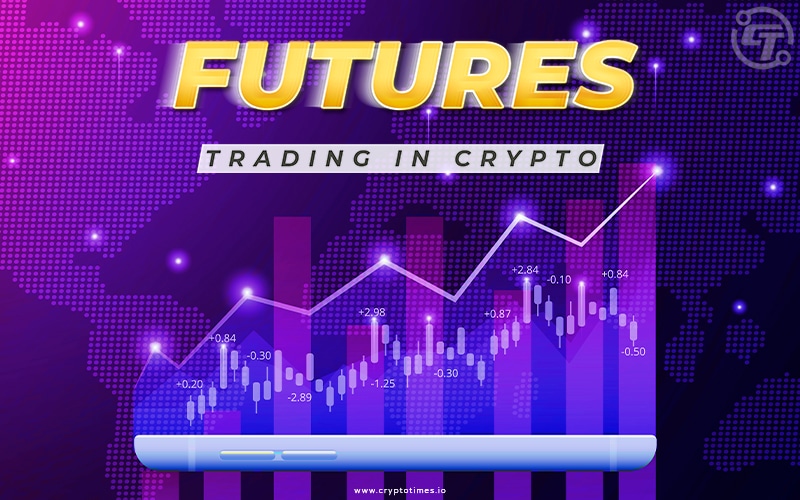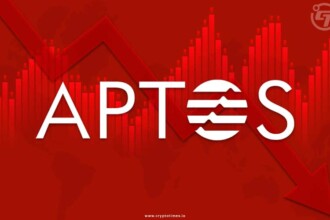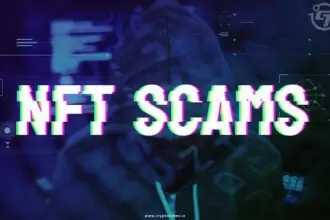Crypto futures are a type of crypto derivatives. Derivative contracts have been around for nearly a century, but it wasn’t long ago that trading platforms began to include cryptocurrencies in their offerings. In the same way that traditional derivatives work, a buyer and a seller enter into a contract to sell an underlying asset.
Derivatives have no inherent value and rely on the underlying asset’s value. An Ethereum derivative, for example, is based on and derives value from the value of Ethereum.
As cryptocurrencies such as Bitcoin and Ethereum gain popularity in the mainstream media, newcomers flock to exchanges. Spot crypto trading attracts risk-averse investors who want to buy digital assets and hold them for an extended period of time, whereas crypto futures trading attracts investors who want to profit from market movements in the future.
With cryptocurrencies experiencing high levels of volatility, traders may want to maximize their profits, and crypto futures allows them to do so.
Begin From The Beginning – Crypto Futures Explained
A crypto futures contract is similar to stock indices or derivatives contracts involving commodities. Futures are not only used to trade physical assets; they can also be used to trade financial assets.
A futures contract requires a buyer to buy shares and a seller to sell them on a specific future date at a specific price. Futures are a strategy to manage risk-reward – a true hedge investment.
Crypto futures allow investors to speculate on the future price of a cryptocurrency without having to hold the underlying cryptocurrency. So, to gain exposure into the crypto world and potentially profit from price fluctuations, you don’t need to own cryptocurrencies.
Futures also are utilized in portfolios to stabilize out rate fluctuations on investments. In the case of crypto futures, the underlying asset is the cryptocurrency, be it Bitcoin, Ethereum, Cardano, or Polkadot which are particularly volatile.
These contracts are negotiated and traded on a crypto futures exchange like CME or Bakkt or Bitfinex or Binance which acts as the intermediary.
The futures contract for crypto futures will be based on, say, the price of Bitcoin and speculators can “bet” on what they believe the price of Bitcoin will be in the future.
How does it work?
A cryptocurrency futures contract allows you to take one of two positions: long or short.
In the long position, the crypto trader expects the price to rise from a certain point. In this case, the trader “goes long,” or purchases the cryptocurrency.
While, in the short position, the crypto trader anticipates that the price will fall from a certain point — i.e., the trader “goes short,” or sells the cryptocurrency.
While buying and selling on spot exchanges is the norm, you can go long or short on a cryptocurrency without actually buying or selling it. This is possible on derivatives exchanges that offer futures, options, CFDs, and other derivatives products.
Why Should You Invest In The Future of Crypto Futures?
To know this, you need to know some of the stuff that is important to know if/when you plan to become a crypto futures trader.
Exchanges allow users to borrow capital to increase their trading size in order to increase the potential gains on their futures bet. Enter– Leverage. Trading with leverage can increase your buying or selling power, allowing you to trade larger amounts. Leverage rates differ significantly between platforms.
To buy 1 BTC on the spot market, for example, you’d need thousands of dollars. However, thanks to leverage, you can open a long BTC position with a futures contract at a fraction of the cost.
For traders to not have their open position get liquidated, we use the concept of the margin requirement. To open a futures position, an initial margin is required. When using a futures trading account on an exchange, it is the percentage of a futures position’s notional value that must be covered by collateral.
Crypto futures trading differs from spot trading in many ways as it doesn’t require participants to hold any assets to participate. The leverage available in futures trades can easily enhance a portfolio multi-fold within a single trade.
Also, crypto futures are a way for crypto miners to lock in prices that ensure a return on their mining investments regardless of the cryptocurrency’s future price trajectory.
Crypto futures are also used by investors/traders to hedge their positions in the spot market. For example, if an investor expects bitcoin’s spot price to rise, he or she may short the currency’s futures as a hedge. As a result, they stand to profit even if the bitcoin price moves in the opposite direction specified in their bet.
Virtual currencies like Bitcoin are considered commodities under the Commodity Exchange Act (CEA). Bitcoin futures contracts are traded on an exchange regulated by the Commodity Futures Trading Commission (CFTC).
Cryptocurrency futures markets sprang up, while regulators were still grappling with more fundamental questions about the legal status of digital assets. BitMEX pioneered crypto futures trading with coin-margined and collateralized contracts without authoritative regulations.
Such an environment in some countries may prevent traders from trading on non-regulated venues. Large institutional investors are hesitant to participate in crypto futures because the CFTC later pursued BitMEX for anti-money laundering (AML) and Bank Secrecy Act (BSA) violations, and the founders pleaded guilty for the same.
So, the presence of regulatory authorities like CFTC may provide some comfort to such trading players.
And, because the futures are settled in stable coins like USDT or BUSD, there is no need for a Bitcoin wallet. Let’s face it, keeping bitcoin in custody can be a costly affair.
Now we did touch a little bit on the topic of leverage. But it’s really important to know it in and out. So let’s discuss.
Understanding Leverages Some More – Attached Risks & Benefits
The use of borrowed capital to trade cryptocurrencies is termed leverage. It increases your purchasing or selling power, allowing you to trade with more capital than you currently have in your wallet. You could borrow up to 100 times your account balance depending on the crypto exchange you trade on.
Leverage is expressed as a ratio, such as 5x,10x, or 20x. It indicates how many times your initial capital has been multiplied. Let’s say you have $100 in your exchange account and want to open a position in bitcoin worth $1,000 BTC. Your $100 will have the same purchasing power as $1,000 with a 10x leverage.
So, even if you don’t have an asset, you can still borrow it and sell it if you think the market will go lower or higher, as the case may be.
Before diving into the risks and benefits involved around leverage, exactly how does it work?
An exchange will not allow you to borrow funds unless you put up some sort of insurance in case the trade goes against you. This insurance fund is known as an “initial margin,” which a trader must set aside before engaging in a leveraged trade.
The collateral needed is determined by the leverage used and the total value of the position you wish to open. It is for the trader to not get liquidated.
There is a maximum leverage limitation depending on what you are leveraging. Regulations would govern how much each instrument could be leveraged. Crypto traders must keep in mind that while they are increasing their potential for additional profit, they are also increasing their potential for loss.
You’d say, tell me about why or why not to go for leverage during crypto futures trading?
Pros
- There is a significant obvious benefit for a resourceful trader who obtains leverage and correctly measures his ratios.
- When compared to traditional crypto trading, you can make much more money with a fraction of the money invested. This is because it frees up capital that could have been invested elsewhere.
- Gearing refers to the ability to increase the capital available for other investments. If you are confident in your investment, you can increase your holdings with less capital.
But it’s not a smooth road, of course. Crypto futures have their own share of hurdles and potholes.
Cons
We are aware of the fact that cryptocurrency is an extremely volatile market, and using leverages on the rates that we see on a daily basis is extremely dangerous if the trader does not know exactly what he is doing.
- Some exchange companies will sell your position if it falls too far. This is known as an “automatic stop-loss,” and once activated, your position is no longer active, regardless of the subsequent swings.
- Also, the crypto futures trading exchange providing leverage may charge an “overnight fee,” which is a percentage of the total value of your asset charged for each night your trade is open.
This is not an issue for trades lasting less than a day, but for someone interested in holding leveraged positions over time, this could have a significant impact on profits if not properly accounted for.
Because leverage is a result multiplier, it is highly recommended that you be a trained trader before using this particular tool. Experience is an extremely valuable asset that, in my opinion, is required in this specific case.
Now that we have become a “little” smart on the nitty-gritty of crypto futures trading – leverage, margin requirement, where leverages can go wrong or can give a great profit, how do we begin the cryptocurrency futures trading?
How Do We Begin The Journey Of Crypto Futures Trading?
1. Do Your Research
Futures contracts trade differently than stocks, funds, and fixed income instruments, so if you’ve never traded futures, learn how they work and what traders need to know. You must predict how your currency will perform in the coming hours or days.
Ask yourself questions like:
- How well do you understand the advantages and disadvantages of your investments?
- Have you, for example, performed a SWOT analysis or used any other tools to evaluate the risk/profit ratio?
- How confident are you that your bet will be profitable?
- Is the daily news going to have an impact on your holding, and if so, why?
You must comprehend how to move the price of your asset on the market in which it is traded. Again, this is related to understanding the market, graphs, and daily news.
2. Find your niche trading methodology and develop a trading plan
Your research is going to make you confident as the knowledge overtakes your fears and gives a perspective of how to play this game we call crypto futures trading.
Finding a crypto trading methodology implies more than simply copying a highly profitable strategy explored on YouTube or social media. A successful trading methodology must be tailored to your psychological characteristics, lifestyle, risk tolerance, and long-term goals.
Creating and implementing a trading strategy may be the most important thing you do to advance your trading career. Your trading strategy should be based on a thorough examination of the market in which you intend to trade.
Consider your trading objectives for each trade, the amount of risk you plan to take on a trade, and how much risk is acceptable for each trade as you develop your crypto trading plan.
Other considerations include the technical and fundamental analysis indicators you intend to use to generate, buy and sell signals. The types of orders you intend to use, and the manner in which you intend to monitor market and price movements.
When trading in the volatile crypto futures market, money management and position sizing must also be taken into account.
3. Determine where you want to trade
Crypto futures can be traded on two separate markets.
The first option is to trade on specific cryptocurrency exchanges such as BitMEX and Binance. Cryptocurrency exchanges have been providing this option for quite some time, even though crypto futures trading is largely unregulated.
The second option is to trade on publicly traded exchanges. This is a relatively new phenomenon and it all started on December 10th, 2017, when Chicago Board Options Exchange (CBOE) launched Bitcoin futures but discontinued it later.
The Chicago Mercantile Exchange (CME) replaced it. In addition to standard bitcoin contracts, the exchange offers Micro Bitcoin and Ethereum futures, which are one-tenth the size of a standard bitcoin, as well as bitcoin futures options.
Bakkt, which is listed on the NYSE, also provides crypto trading in physically-settled crypto futures and options. OKEx, based in Seychelles, and Binance, based in Malta, are two of the largest exchanges of crypto futures trading.
In fact, based on the number of open interest contracts on its platform, the latter is ranked first. However, it is not regulated by authorities in the United States.
4. Learn to manage risks and command over your emotions
Risk management starts with simply defining what you consider an acceptable or unacceptable loss in a trade.
Having a long-term perspective necessitates traders approaching each trade with a well-defined strategy. Risk management strategies can help you protect your capital, set realistic expectations, and avoid allowing emotions to take over your trades.
Emotional and compulsive trading are examples of gambling behavior that can ruin your trading career.
We shall now discuss some of the leading crypto trading exchanges, especially for leverage trading cryptocurrency futures.
Crypto Exchanges For Crypto Futures Trading
1. Binance
This platform has grown by leaps and bounds since its inception in 2017. Binance Futures provides traders with the ability to use leverage and open both short and long positions – of up to 125x when placing trades.
The platform is very similar to Binance’s spot exchange, and its simple user interface and smooth operation make it the most popular trading app. To use the Binance leverage trading facility, you must first complete the KYC (identity verification) process – Binance has a stringent KYC process in place for its futures exchange platform. And, most importantly, your home country must not be on Binance’s blacklist.
Binance is probably the most secure cryptocurrency exchange available. It has launched a fund known as the SAFU fund. The exchange began allocating 10% of all trading fees to its Secure Assets Fund for Users (SAFU) in order to provide users with additional protection in extreme cases.
2. FTX
If you’re looking for a cutting-edge crypto exchange platform, FTX is the place to be. This platform, which was founded in the middle of 2019, provides insurance funds and an exceptional amount of liquidity to its users.
FTX provides a wide range of leverage tokens such as BTC, ETH, EOS, XRP, and USDT. Each coin has three futures contracts: one that expires this quarter, one that expires next quarter, and one that is perpetual.
At first, access is granted without the need for identity verification or KYC in this crypto trading exchange. Also, to avoid large price dislocations, FTX futures use careful, measured margin calls and allow withdrawals of up to $2,000 per day. The platform consists of a professional-level user interface that is available on both mobile and desktop.
3. Bitfinex
Perpetual futures contracts are a feature offered by crypto-based futures exchanges. Bitfinex is a prominent provider of such contracts. These products function similar to traditional futures, but on a rolling basis.
Bitfinex is a large cryptocurrency exchange that offers a diverse range of cryptocurrency products and trading options, including margin accounts, derivatives, and crypto trading.
Bitfinex determines mark price (the price at which the futures contract is valued) by referencing the BFX Composite Index (BFXCI). The BFXCI is an evenly weighted index of prices from pairs traded on Bitfinex’s spot market as well as up to three separate leading exchanges, including prices for the relevant token pairs.
This protects against unjustified liquidation caused by market manipulation or extreme volatility. Liquidation is intrinsically linked to the market price, which is determined by the BFXCI at the time the position is opened.
In Closing
To begin to trade is to empower the money supply in the economy along with maximizing your own profit. Although you cannot reach a 100% perfect trade analogy, you can strive for Six Sigma’s success.
Considering each aspect mentioned in this article for you to begin your crypto trading journey in crypto futures, you must pen down the length of risk you are willing to cater.
Most importantly, the consideration for large margin requirements, risk-benefit management, and psychological aspects for crypto futures trading can discipline you as a trader.







